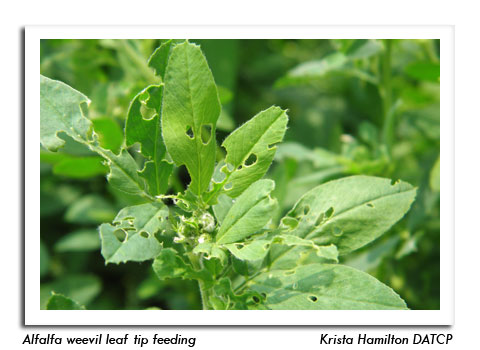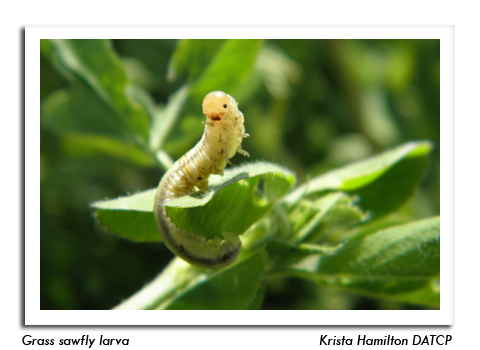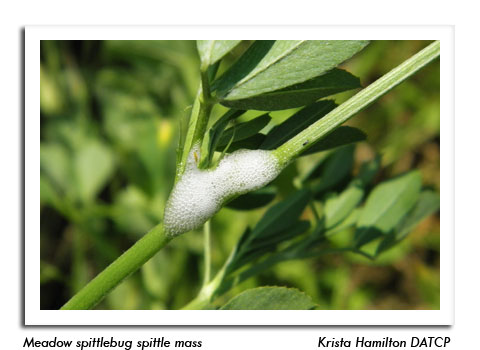
 |
|
|
Forages & Grains
Volume 62 Number 5 Date 05/25/2017 ALFALFA WEEVIL - Larval populations are increasing in first-crop alfalfa. Counts now range from 1-140 larvae per 100 sweeps and average 26 per 100 sweeps, compared to an average of 10 per 100 sweeps last week. Surveys indicate leaf tip feeding damage is still low at 5-10%, but this is likely to change as larvae transition into the larger and most destructive third and fourth instars, or if wet weather continues to delay harvest. Any first-crop alfalfa that is not cut by early June could be severely degraded. Management plans at this time should include harvesting fields during the next rain-free period and monitoring regrowth for carryover of weevil larvae. POTATO LEAFHOPPER - Migrant adults are widely distributed over the southern half of the state, from St. Croix County east to Fond du Lac County. Surveys this week found low counts of 1-12 per 100 sweeps in 26 of 56 sampled fields. PEA APHID - This insect continues to be abundant in most alfalfa fields. Densities currently range as high as 1,200 per 100 sweeps (12 per sweep) and average 160 per 100 sweeps. The heavy rain of the past two weeks may promote the spread of fungal pathogens that regulate pea aphids and could contribute to a mid-June population collapse. PLANT BUG - Nymphs of both the alfalfa and tarnished plant bug were collected from alfalfa for the first time this season on May 22. The tarnished plant bug is the more numerous of the two species. GRASS SAWFLY - Low numbers of these striped larvae have been found in scattered alfalfa fields. The caterpillar-like worms are the immature form of the grass sawfly, an insect belonging to the bee and wasp order, Hymenoptera. The larvae, which resemble true armyworms, feed on grasses and are not considered economically important. MEADOW SPITTLEBUG - Nymphs and their characteristic frothy spittle masses were observed in alfalfa earlier this week. Populations are currently less than three per 100 stems. -- Krista Hamilton, DATCP Entomologist 





|
|
|